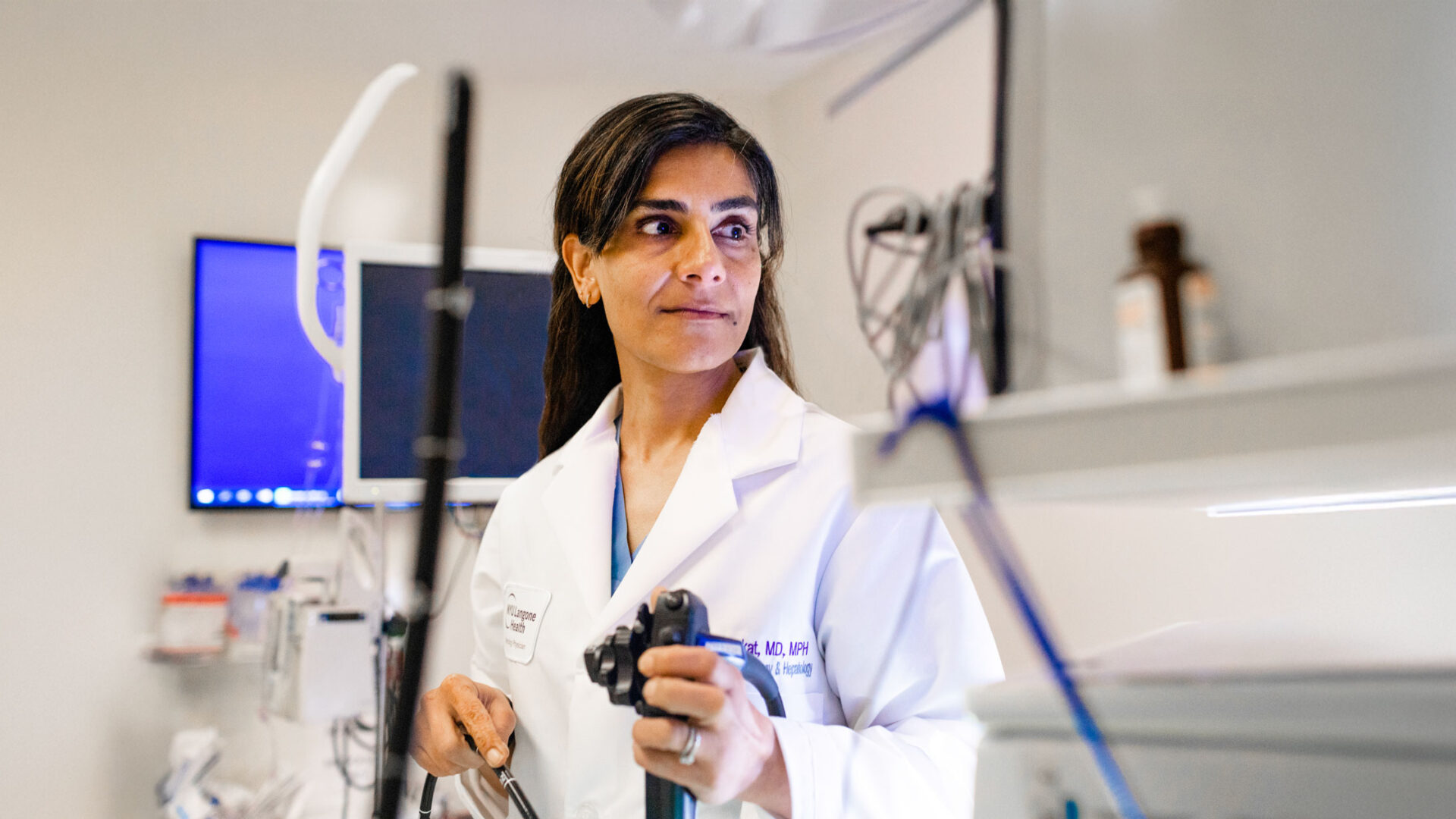Artificial intelligence (AI) technologies are rapidly changing the way gastroenterologists practice medicine. In the past five years, the FDA has approved several computer-aided polyp detection (CADe) systems for endoscopy. These technologies are a boon for colorectal cancer detection, providing an extra layer of confidence that if polyps are present, they will be detected during colonoscopy.
As CADe technologies continue to evolve, broader AI applications are also reshaping documentation, patient communication, and clinical workflows.
Here, acclaimed gastroenterologist and AI expert Aasma Shaukat, MD, MPH, the Robert M. and Mary H. Glickman Professor of Medicine at NYU Langone Health—who has been at the forefront of pioneering CAD trials—discusses the AI advancements she’s most excited about, their risks and potential, and key considerations for providers integrating AI into their practice.
Physician Focus: With so many AI advances in motion, which emerging innovations do you believe will most transform the field in the next few years?
Dr. Shaukat: With colonoscopy, the next generation of CAD technology will combine polyp detection with valuable, real-time diagnostic information such as polyp size and histology. This update to existing technology, known as CADe/CADx, could be practice changing, allowing us to remove only those polyps that have the potential to be neoplastic, saving the patient the risk of polypectomy and the cost of sending potentially benign polyps to pathology. Here at NYU Langone, we are conducting a clinical trial comparing two CADe systems and assisting with validation of CADx histology and size prediction.
Physician Focus: Many new AI tools in medicine focus on improving workflow efficiency. Are there any specific technologies you’re excited about or currently using with success?
Dr. Shaukat: We’re looking forward to getting AI Scribe soon. AI Scribe helps document patient interactions. It listens to the conversation during a patient encounter, then produces a well-curated patient clinic note, which adds to the confidence of the diagnosis and the management plan. Other physicians can also use the notes in follow-up or as a reference.
AI for patient summaries in electronic health records (EHR) is another potential time-saver. Right now, if you see a new or an established patient, you have to scroll back in the chart and piece together what’s happened that’s relevant to your visit with the patient, which can take a substantial amount of time, and we can miss things. These EHR AI tools scan the information since your last visit and summarizes it.
“Imagine a patient with inflammatory bowel disease who was diagnosed at age 30, and now, at age 50, has come to see you. This AI tool provides a succinct summary of the patient’s journey to this point.”
Aasma Shaukat, MD, MPH
It’s particularly helpful for patients with chronic diseases. Imagine a patient with inflammatory bowel disease who was diagnosed at age 30, and now, at age 50, has come to see you. There’s a lot of relevant information needed to decide the best treatment, including disease severity, flare frequency, and medication responses. This AI tool provides a succinct summary of the patient’s journey to this point.
AI is also being used in MyChart [NYU Langone’s patient portal] to help draft responses to straightforward questions patients often ask about upcoming or past visits. We’re also using AI text prompts during colonoscopy preparation. Instead of giving patients a piece of paper with instructions, they get text messages that walk them through prep steps.
Physician Focus: What challenges do clinicians face in integrating AI into their daily practice, and how can these be addressed?
Dr. Shaukat: Physicians tend to be skeptical by nature. We worry about misdiagnosis and erroneous information, such as the AI saying something to a patient that’s not accurate. With AI-enhanced colonoscopy, for example, there’s the potential for false positives. AI technology picks up everything that it thinks looks like a polyp. Physicians are well trained and can then decide if it’s a polyp or not. But we worry that too many false positives could lead to physician fatigue. That’s something we’ll just have to study.
“We worry that too many false positives could lead to physician fatigue. That’s something we’ll just have to study.”
Physicians also worry about how patients will perceive AI tools. Physicians should explain to patients that AI is a tool to improve care. It doesn’t replace physicians or lessen their clinical responsibilities in any way.
These are the unknowns of using AI, but once physicians adopt it, I think they’ll find it very helpful, especially for reducing auxiliary work that could otherwise lead to physician dissatisfaction and burnout.
Physician Focus: How should medical education evolve to prepare gastroenterologists and hepatologists to work effectively with AI tools?
Dr. Shaukat: AI is here to stay, so we need to train our trainees early in AI tools to ensure seamless integration. At NYU Grossman School of Medicine, there’s a heavy emphasis on educational content that is simulation based as well as training with and without CADe for endoscopy so students can learn the differences and be able to perform high-quality exams in any setting. AI tools are baked into our curriculum so students can learn these skills early and improve on them during the rest of their training or fellowship.
Physician Focus: What advice would you give to clinicians who are interested in incorporating AI into their practice but may be hesitant?
Dr. Shaukat: It’s still early, but widespread adoption of AI is going to happen. Because these tools have the potential to make our practice and our patient care better, we should be embracing them.
Research these tools to understand the benefits or any downsides and how they can enhance your practice. Make a game plan of what is available now, what you want to add to your practice and how it might help, so you can act at the right time.
AI tools have added cost, but you can sign up for a free trial, then decide if it’s something you want to invest in. For some practices, it could actually be cost saving, depending upon patient volume and how much time it could reduce. If AI tools reduce burnout and result in increased physician satisfaction and longevity, that is priceless to many healthcare systems.






